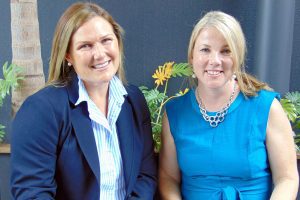
If you have a sore that hasn’t improved in a month then chances are you are not receiving the specialised care you need.
Research shows that almost half a million Australians suffer from chronic wounds – and 70 per cent of those wounds are misdiagnosed.
Queensland University of Technology and the Wound Management Innovation Cooperative Research Centre (CRC) is changing the way health and aged care professionals across Australia treat chronic, non-healing wounds.
“Chronic wounds are a hidden epidemic because those who live with them tend to hide them from the public, and many sufferers are in aged care facilities,” said Michelle Gibb, a nurse practitioner who runs QUT’s Wound Healing Community Outreach Service, one of the CRC’s partner clinics for implementing best-practice treatments.
“If it’s not treated correctly, a chronic wound can take years to heal – if at all. A large number of those wounds reoccur and many lead to serious ulcers and even amputations. “We are researching the fastest and most effective ways to treat chronic wounds and turning that into proven treatment regimens that any GP, hospital, clinic or aged care facility can follow.
“One of our patients had a nasty wound on his leg for 17 years before he was referred to our clinic. We healed him in six weeks.”
This week is Wound Awareness Week, the Australian Wound Management Association’s annual campaign to highlight the growing healthcare concern.
Treating wounds costs Australians $3 billion annually – around $10,000 per patient per year. That cost is expected to increase as the nation’s population ages and diabetes and obesity rates rise.
Ms Gibb said chronic wounds were more than skin-deep.
“They’re highly traumatic for those living with them, consuming almost every aspect of their daily lives,” she said. “They’re painful, often smelly and weepy and require frequent dressing changes so patients are sometimes too embarrassed to get out and about even if they are otherwise quite mobile – and that social isolation can lead to depression.”
QUT Faculty of Health Research Fellow Dr Kathy Finlayson is one of the people working to keep the health costs down through wound prevention and early treatment.
Much of her research focuses on treating venous leg ulcers.
“About 80 per cent of patients with venous leg ulcers had not received best-practice treatment before joining one of our studies, and almost half of the study participants had their ulcers for more than six months,” said Dr Finlayson, who is based at QUT’s Institute for Health and Biomedical Innovation.
“We healed 59 per cent of the study participants within 12 weeks using best-practice methods; more than 80 per cent were fully healed within 24 weeks.
“Our research into venous leg ulcer prevention is also very promising – the odds of developing a recurring ulcer are 16 times less if patients elevate their legs for just one hour a day, and 2.5 times less for patients who wear compression stockings at least six days a week.”
The CRC’s studies into the most common preventable wounds, skin tears, have shown that moisturising the skin twice a day reduces skin tears by 50 per cent.
QUT and CRC researchers are currently developing risk assessment tools for health professionals, trialling the use of hyperbaric oxygen therapy to heal chronic venous leg ulcers, and developing evidence-based wound management and prevention resources for aged care workers.




















Add Comment